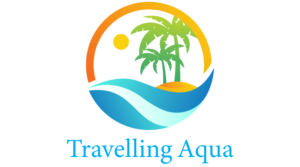Social media has evolved from a casual networking platform to a central hub for brand communication, customer engagement, and revenue generation. For marketers, understanding how to integrate social media into digital content marketing strategies is essential for building visibility, authority, and trust. While traditional marketing methods still hold value, social media offers unparalleled opportunities to connect with audiences, distribute content, and drive measurable results.
This article explores practical ways to leverage social media for digital content marketing, outlining strategies, tools, and best practices to maximize reach and engagement while aligning with business goals.
Why Social Media Matters for Digital Content Marketing
Social media platforms are unique because they allow brands to combine content creation with real-time engagement. Unlike static websites or one-way advertising, social media enables two-way communication. Users not only consume content but can interact, share, and respond, creating organic amplification and building community.
For digital content marketing, this means:
- Enhanced visibility for blog posts, videos, infographics, and other content formats
- Targeted reach to specific demographics and interests
- Opportunities to engage directly with followers, increasing loyalty
- Real-time feedback to refine marketing strategies
Platforms like Instagram, LinkedIn, TikTok, Facebook, Twitter, and YouTube each offer unique ways to integrate content marketing campaigns and drive business results.
Define Clear Objectives for Social Media Marketing
Before leveraging social media, it’s important to align content with clear objectives. Ask yourself:
- Do you want to increase brand awareness?
- Are you looking to drive traffic to your website or blog?
- Do you aim to generate leads or conversions?
- Is your goal to establish thought leadership in your niche?
Defining goals ensures your digital content marketing efforts remain focused and measurable. Each objective will influence the type of content you create, the platforms you prioritize, and the metrics you track.
Create Engaging Content for Each Platform
Not all content works the same way across platforms. Social media success relies on tailoring your content to fit the medium and the audience.
1. Instagram and TikTok
- Use short-form videos, reels, and carousel posts to capture attention quickly.
- Employ visually compelling graphics and storytelling to communicate messages.
- Engage audiences through polls, questions, and interactive stickers.
2. LinkedIn
- Focus on professional insights, case studies, and thought leadership content.
- Publish articles and posts that provide actionable advice relevant to your industry.
- Encourage employees to share content to expand reach organically.
3. Facebook
- Leverage video, live streams, and long-form posts to build community.
- Utilize Facebook groups to foster engagement with niche audiences.
- Promote blog posts or lead magnets to generate qualified traffic.
4. Twitter/X
- Share timely updates, news, and micro-content that encourages sharing.
- Engage in conversations and trending topics relevant to your industry.
- Use hashtags strategically to increase visibility and reach new audiences.
Tailoring content for each platform ensures that your digital content marketing resonates with users and drives higher engagement.
Incorporate Paid Social Advertising
While organic reach is valuable, paid social advertising is an effective way to amplify content. Platforms like Facebook Ads, LinkedIn Sponsored Content, and TikTok Ads allow precise targeting based on demographics, interests, behavior, and even previous website interactions.
Key strategies include:
- Promoting high-performing blog posts or videos to wider audiences
- Using lead generation ads to capture emails or sign-ups directly from social platforms
- Retargeting users who have engaged with your content to nurture them toward conversion
Paid campaigns complement organic digital content marketing efforts and accelerate visibility and engagement.
Engage and Interact with Your Audience
Social media is not just a broadcasting tool; it’s a conversation platform. Engaging with your audience enhances the effectiveness of digital content marketing by building trust and loyalty.
Tips for engagement include:
- Respond promptly to comments, questions, and direct messages
- Encourage user-generated content and share it on your channels
- Run interactive campaigns like contests, polls, or challenges
- Monitor mentions and discussions to join relevant conversations
Active engagement positions your brand as approachable and responsive, making content more impactful and shareable.
Measure, Analyze, and Optimize
No digital content marketing strategy is complete without measuring results. Social media platforms provide analytics tools that track reach, engagement, clicks, conversions, and audience demographics.
Key performance indicators (KPIs) to monitor include:
- Engagement rate (likes, comments, shares)
- Click-through rate (CTR) to blog posts or landing pages
- Follower growth and audience demographics
- Conversions or leads generated from campaigns
- Return on investment (ROI) from paid promotions
Regular analysis helps refine content strategies, identify what resonates with your audience, and optimize campaigns for better results.
Leverage Influencer Collaborations
Influencers can amplify your digital content marketing efforts by introducing your brand to new, relevant audiences. Partnering with influencers who align with your brand values ensures credibility and authentic engagement. Strategies include:
- Sponsored posts or collaborations featuring your content
- Co-creating content that adds value to both audiences
- Leveraging influencer testimonials or reviews to boost trust
Influencers can serve as both content creators and distributors, expanding reach and generating higher engagement.
Conclusion
Social media is a powerful tool for digital content marketing when used strategically. By defining objectives, creating platform-specific content, engaging with audiences, and measuring performance, brands can maximize their reach, authority, and conversions.
Combining organic content, paid advertising, and influencer partnerships ensures a holistic approach that drives both engagement and measurable results. For marketers, social media is no longer optional—it is a central pillar of successful digital content marketing strategies that grow brand visibility, attract leads, and foster customer loyalty.

